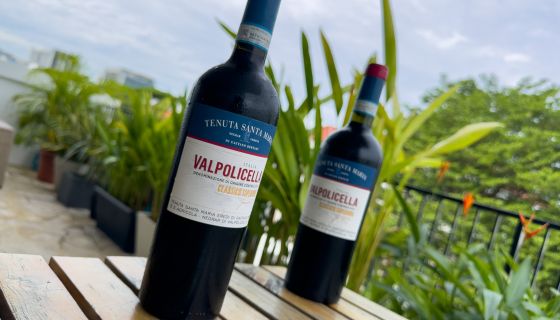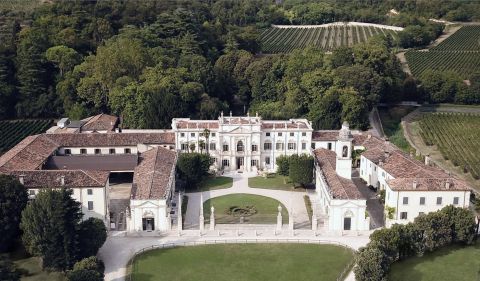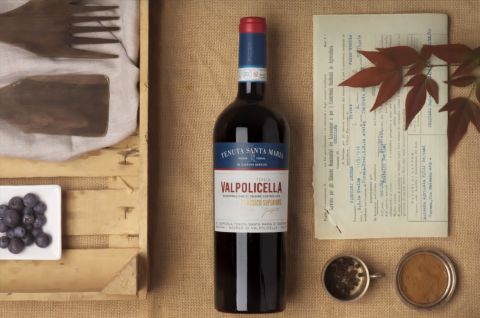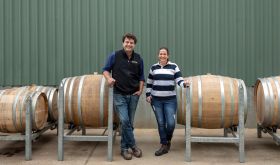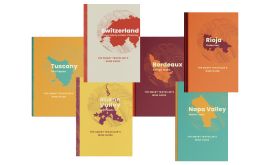Finding a benchmark example of a wine isn’t always straightforward. Most Valpolicella, for example, is made by large producers, including enormous co-operatives, who are mostly responsible for the region’s output doubling since 1997. As a result, the most statistically commonplace Valpolicella is often a weedy and insipid red – ‘mere supermarket fodder’, according to The Oxford Companion to Wine – and that makes the one made by Santa Maria entirely atypical for all the right reasons.
All three of the vintages that I tasted – 2020, 2021 and 2022 – show Valpolicella’s true potential. They are rich with meaty aromas; the black fruit is pure cherry, both sour at sweet at the same time, with slight desiccation on the 2021 and a more mulchy undergrowth tone on the 2020. Fourteen months of maturation in oak barrels gives all three of them a well-judged spicy seasoning.
With high alcohol (14.5% in the 2021 and 2022, 14% in the 2020), they are concentrated and weighty on the palate, yet with fine tannins and juicy acid working together to give immediate drinkability. The complexity of flavour they display at a relatively young age means there’s no need to keep the bottles any longer, and while the 2021 and 2022 will hold for a few years more, the 2020 should probably be drunk in the next six months.
All three are prime examples of what Valpolicella could and should be at its best: complex and concentrated, ready to drink, supremely gastronomic and excellent value.
The grand Mosconi-Bertani estate in Negrar dates back to the 18th century, but the Santa Maria brand began only in the 1990s. It was established by three members of the Bertani family, who left their eponymous family winery to set up on their own. The Bertani name has an illustrious history in the region, laying claim to making the first dry Valpolicella in 1860 as well as refining the appassimento method of dehydrating grapes to create Amarone.
At Tenuta Santa Maria Eredi di Gaetano Bertani, to use its full name, they aim to ‘reflect the realities of the land with elegance rather than making standardised commercial products’, and cite the watchwords of sustainability and low-intervention winemaking as core values. They grow four local varieties, all of which are blended into the Valpolicella Classico Superiore: Corvina (70%), Corvinone (15%), Rondinella (10%) and Oseleta (5%). There’s nothing unusual about how they make the wine, so the quality must indeed reflect their philosophy of top-notch grapes and sensitive winemaking.
The label gives two important clues to that quality, picked out in gold letters. Classico refers to the original Valpolicella heartland, where many of the better wines come from. The particular vines for this wine are grown at 120–220 m (394–722 ft) in elevation, in the foothills of the Lessini mountains, rather than on the flat valley floor. At the highest point, the vineyards are terraced with a south-east exposure, the classic European formula for giving grapes maximum exposure and therefore driving ripeness.
The other word is superiore, which further guarantees ripeness. Wines labelled as such must be made from grapes that have potential alcohol of at least 11% at harvest, compared with 10% for regular Valpolicella. These percentages were almost certainly determined in a cooler era, when achieving 11% was perhaps exceptional; however, it’s entirely likely that some growers still harvest their Valpolicella fruit before it’s fully ripe, especially those supplying the demands of bulk producers.
It’s also possible that attempts are made to disguise these inferior grapes via the ripasso method, in which regular Valpolicella is ‘re-passed’ over the leftover skins of an Amarone fermentation to leech out whatever flavour and extract remains – a bit like making a second cup of tea from one teabag. As a result, again according to the Oxford Companion to Wine:
‘the consorzio has launched a campaign to encourage producers to increase the production of Valpolicella Superiore without resorting to Ripasso or dried grapes, in the hope that more wines with a clear expression of origin will emerge.’
Santa Maria would appear to be doing exactly that, giving us a delicious benchmark for what Classico and Superiore should mean for Valpolicella.
There are several vintages available around the world, including plenty stocked by US retailers. In general, I would go for the youngest available vintage, which is the 2022 in most cases, and serve it lightly chilled alongside any sort of Italian dish for maximum pleasure.
Click here for nearly 60 articles about the Veneto region, including hundreds of reviews of Valpolicella, Amarone, Ripasso and more.

